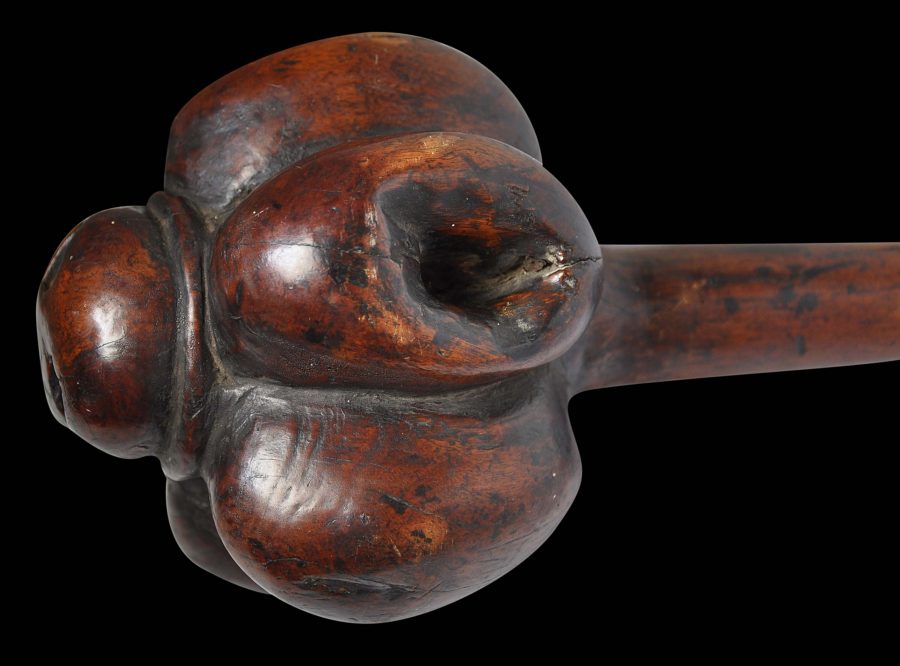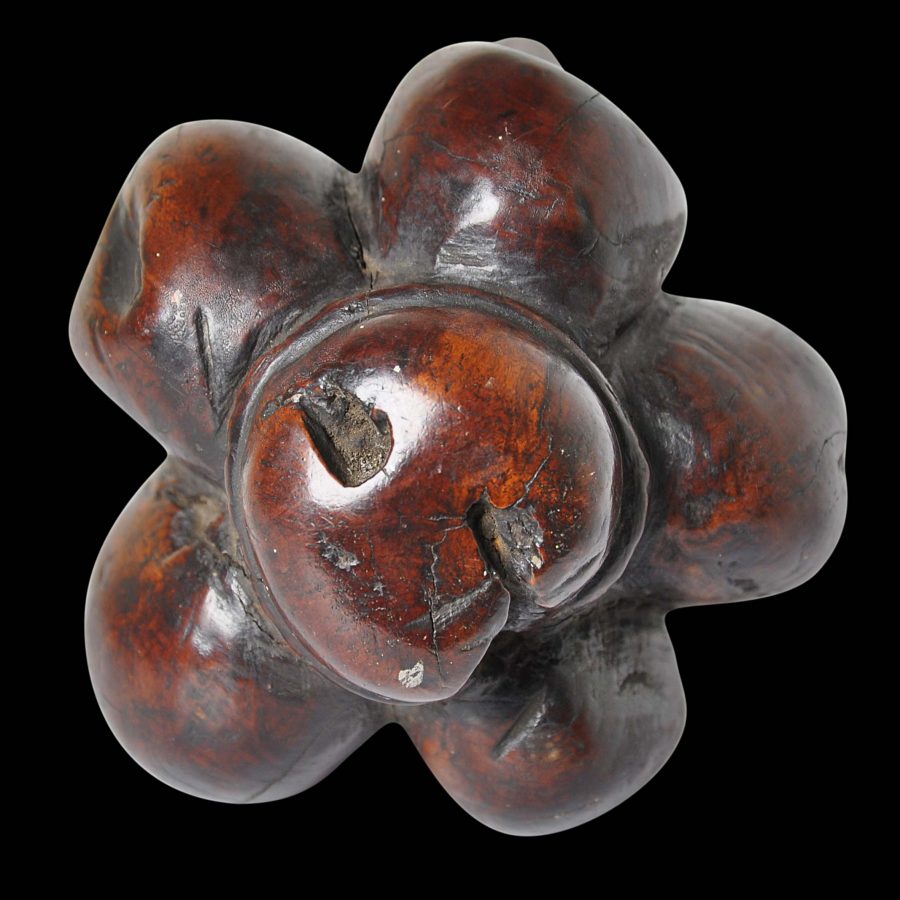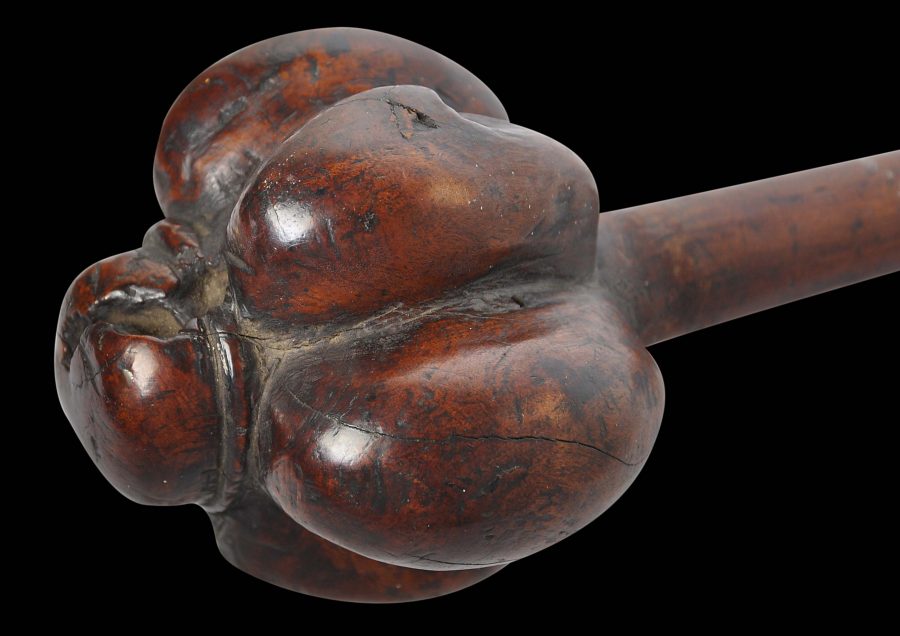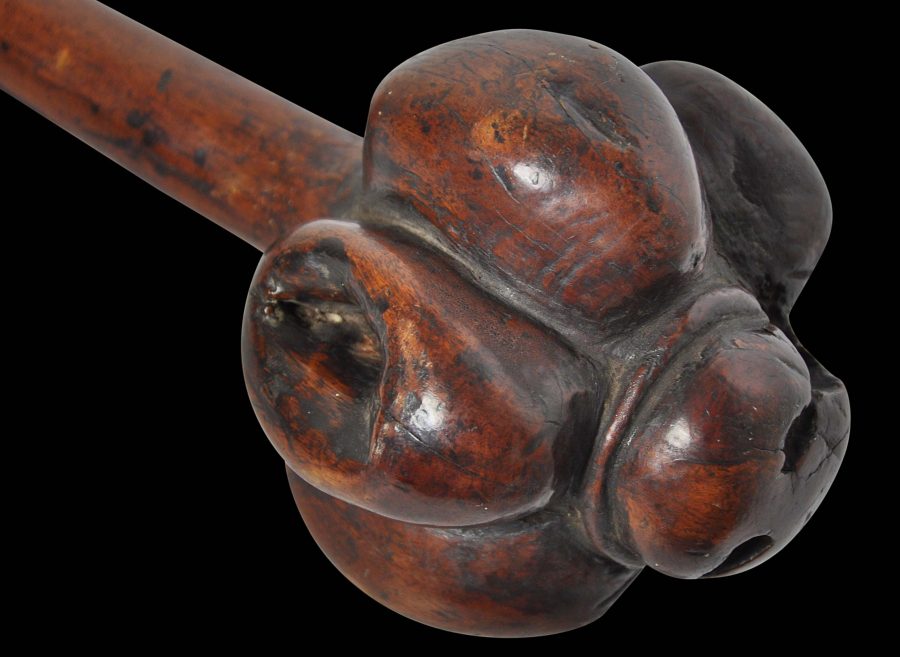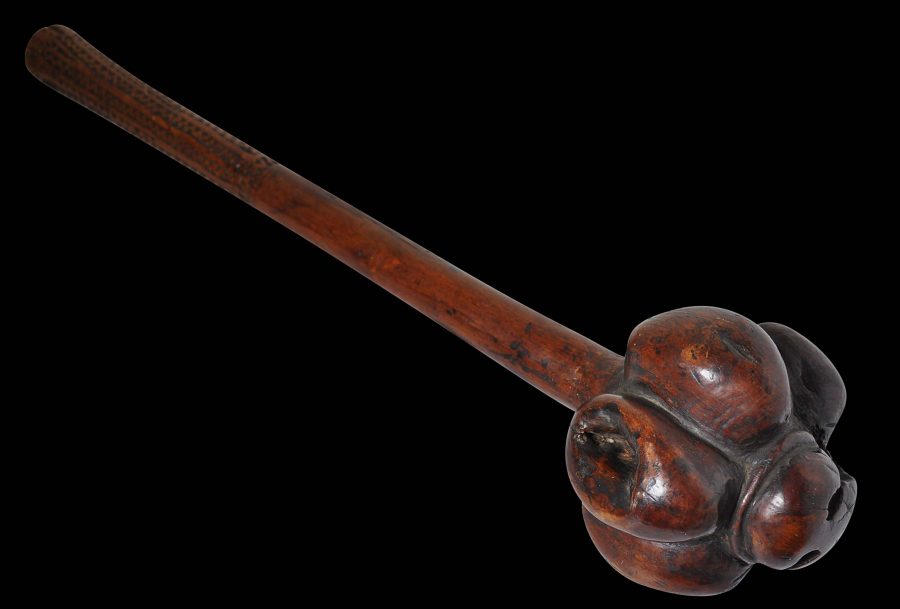Enquiry about object: 2940
Fijian Throwing Club (I Ula Tavatava)
Fiji 18th-early 19th century
length: 42cm
Provenance
UK art market; private UK collection.
This Fijian throwing club or ula has an exceptional deep and glossy patina: its significant age is very clear. It also has the remnants of an old collection label attached to the handle. This has become brittle with age and worn away. Kaeppler (2010, p, 232) illustrates several ulas with similar patinas and dates them to either the 18th century or the early 19th century.
The club has a large, fluted, petal-like head, with five nodes around a central node. One of the nodes has a large root knot adding to its sculptural qualities. The grip on the handle is carved with parallel zig-zag lines (tavatava), to allow the warrior to grasp the club firmly before throwing it. This carving shows significant wear and patina.
Such clubs were carved from the buttress roots of ironwood saplings. They were worn by warriors in their waistbands and then thrown, with great precision, at the skulls of their assailants. They were a well-known weapon to early European sailors who reached Fiji – many had ulas hurled at them, and the ulas were known for their speed and accuracy.
The ula here seems to have traces of old varnish, which probably dates to the 19th century. There is the usual, old, light shrinkage-related cracking to the shaft. But overall, this is fine example.
The last image shows remnants of an old collection label on the shaft.
References
Kaeppler, A. L., Polynesia: The Mark and Carolyn Blackburn Collection of Polynesian Art, University of Hawaii Press, 2010.




